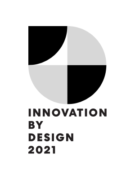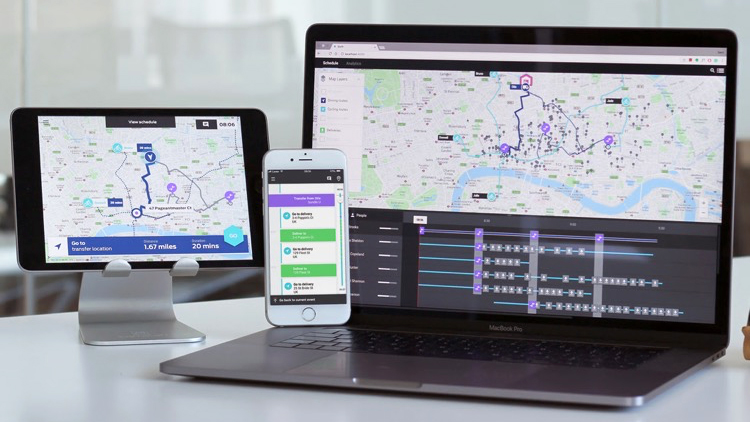Last mile delivery
Easing the last mile of the urban delivery system
Ford Mobility
-
ClientFord Mobility
-
IndustryMobility
-
ServicesCustomer Research, Design Research, Interaction, Visual Design, Business Design
A new way to keep cities moving
Ford is tackling the myriad of complex problems created by skyrocketing delivery volumes with an innovative venture that prioritizes the most efficient method of getting packages to customers’ doorsteps.
In 2020, online shopping surged due to the COVID pandemic, with carriers reporting up to 60-80% increases in parcel volumes, and the trend isn’t going away any time soon. By some estimates, delivery vans now account for over 20% of urban vehicle trips in London, yet traffic crawls at an average speed of 7mph.
The Ford Last Mile Delivery service uses a proprietary algorithm to enable delivery vans to sync up with city-friendly pedestrian and cycle couriers to complete deliveries more efficiently, reducing carbon emissions, traffic congestion, and employee frustrations alike.

Fast Company Innovation by Design Awards
Ford Mobility Last Mile Delivery received an Honorable Mention in the Mobility and Sustainability categories at the 2021 Fast Company Innovation by Design Awards.
Balancing needs to empower teamwork
The Ford Last Mile delivery system was built from insights generated through extensive research into the realities that delivery personnel face while trying to fulfill deliveries under time constraints and challenging conditions. The team interviewed and shadowed a wide variety of delivery professionals including fleet managers, high volume package delivery drivers, service providers, and bike messengers to understand their journeys and intersecting workflows.
Smart Design and Ford Mobility worked closely to define the user experience and engage the industry with a series of physical and digital prototypes. The team built up increasingly detailed insights into the behaviors of carriers and the challenges they face in their work. The resulting software provides a layer of organization that addresses the unique needs of each team member and ensures that they work together, rather than pitting them against each other.
Big-picture goals with a simple UX
The Ford multi-modal routing and logistics software coordinates vehicle movements, identifying safe locations for drivers to park and hand off packages to city-friendly foot or cycle couriers who complete the final leg of the journey.
This increases the efficiency of the last mile operations by reducing the number of drivers navigating dense city centers and residential streets that are not designed for cargo vans, and utilizes the agility of couriers on foot or on bike to reach customers in high-rise buildings and pedestrian zones with difficult parking or vehicle restrictions.
The UX prototype built in the project helped Ford develop a courier-facing app for step-by-step delivery guidance, as well as an interface for fleet managers to have a birds-eye view of the system and orchestrate transfers or mitigate issues. Through user testing, the team developed a map view allowing drivers, cyclists, and walkers to see the location of their relevant team members to emphasize the team connection and allow for monitoring and coordination of the collective delivery task. The apps are designed to be simple and clear, creating better accessibility for users who aren’t tech-savvy or may have other limitations.


Creating impact at scale
More than 60,000 packages have been delivered using the Last Mile Delivery software since launch. In a recent trial with eCommerce carrier Hermes in London, the Ford team found that 70-80% of deliveries could be completed using pedestrian couriers, substantially reducing vehicle overheads and lowering costs for carriers.
The Ford Last Mile Delivery solution is helping to offset the rise in the number of delivery vans on city streets — a situation that has increased with the rise in online shopping. Adding bike or pedestrian couriers to the system also opens up flexible employment opportunities for city residents who don’t own a car. Couriers in the trials reported low stress levels and were able to complete deliveries with a higher quality of service and improved punctuality for waiting customers.
A better solution for cities
Inefficient delivery logistics and surging online shopping are global challenges, with the symptoms experienced to varying degrees in every city across the developed and developing world. Each city is unique and faces its own combination of geographical, technical, and human challenges. Customer demands are evolving at a rapid rate and fulfillment speeds, service standards, and sustainability are just some of the factors changing the relationship between customers, carriers and retailers.
Ford’s Last Mile Delivery solution is designed to be flexible so that it can accommodate current and future complexity at a global scale. This sustainable offering has been shown to reduce road congestion and emissions while increasing capacity — creating a win-win for cities, companies, and customers. In the future, the solution may incorporate autonomous vehicles, drones, sidewalk robots and many other technologies deployed in busy cities around the world.